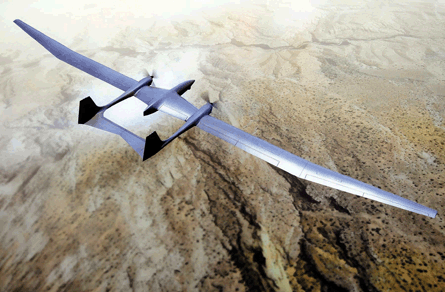Lockheed Martin has unveiled a concept for a new unmanned aerial vehicle (UAV) that appears aimed at the emerging market for a medium-altitude surveillance aircraft with several days of endurance.
A photo showing the twin-boomed airframe with a high-aspect ratio wing is one of the key features on Lockheed's exhibit booth at AUVSI Unmanned Systems North America 2010 symposium and exhibition.
A diagram on the exhibit booth yesterday identifies the aircraft by the acronym "MPLE," but does not elaborate.
The photo shows the aircraft flying at what appears to be medium altitude over a desert landscape. The turreted sensor appears to be hanging from beneath the nose. The high-aspect ratio wings are bent upwards at the tips for a dihedral angle.
 |
|---|
© Lockheed Martin |
Lockheed officials were not immediately available to comment about the photo on the day before the exhibit hall officially opened.
The aircraft appears to target the US military's increasing interest in UAVs that can remain airborne for several days.
Aurora Flight Sciences is already building the gas-powered Orion UAV to provide the capability to track targets for several days without landing. It is aimed at replacing the manned MC-12 Liberty turboprop fleet, as well as complement the General Atomics Aeronautical Systems MQ-1 Predator and MQ-9 Reaper.
Meanwhile, the Air Force Research Laboratory has disclosed plans to launch a demonstration program for a medium altitude, global intelligence, surveillance and reconnaissance (ISR) and communications (MAGIC) platform.
AFRL wants the MAGIC UAV to remain airborne for up to 155h while carrying a 500lb payload at 15,000ft. The same aircraft also would be expected to carry a 2,500lb payload for up to 80h at the same altitude.
Lockheed's new MAPL design appears reminiscent of the twin-boomed P-38 Lightning, except with a high-aspect ratio for long-endurance flight at slow speed. The P-38 was designed by Clarence "Kelly" Johnson several years before he founded the Skunk Works organization, which designed the MAPL concept.
Source: Flight Daily News
















